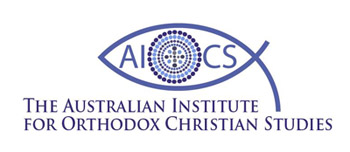by Wagdy Samir
And suddenly there came a sound from heaven, as of a rushing mighty wind, and it filled the whole house where they were sitting. Then there appeared to them divided tongues, as of fire, and one sat upon each of them (Acts 2:2-3)
According to Father Matta, these two verses reveal the specific nature of the Holy Spirit in metaphoric fashion, as wind and fire. First, while the wind denotes the invisible nature of the Spirit (“the wind blows where it wishes […] but [you] cannot tell where it comes from” – John 3:8), on Pentecost day the sound pointed to the Spirit’s presence and filled the house. This sound was “heard through the spiritual ear,” says Father Matta, and paradoxically, quoting Saint Ephraim the Syrian, “filled the house with a sweet aroma.” Perceived through unusual senses, the sound of the presence was mixed with an olfactory experience.
Second, the Pentecost fire reveals the activity the Spirit is to perform in the Church, and Father Matta connects this aspect with the Lord’s words, “I came to send fire on earth” (Luke 12:49). This fire, he adds, “will consume sin […] [by] overriding all that is negative so that […] righteousness, sanctification, truth, and justice increase.”
The abiding of the Spirit within the disciples signifies that “the fiery Spirit rested in the disciples’ beings” to transform them into God’s temple. And Father Matta quotes, here, the Pauline saying: “you are the temple of God and the Spirit of God dwells in you” (1 Corinthians 3:16). Thus, the Spirit “works at once in the disciples and through the disciples.” In other words, the Spirit filling the disciples is “the Spirit’s conquest of the very entity of humankind, so that its being becomes a being or entity of God, the body of Christ!! This [pneumatic] filling is thus a [form of] union: entity to entity.” No wonder the manifestation of this experience, speaking in tongues, is a synergetic event, “a human-divine act, simultaneously.”
Father Matta continues the analysis by stating that, through the wind and the fire, the disciples experienced baptism, purification, and sanctification through the invisible presence of the Lord and his Holy Spirit. And through the disciples, as the first-fruits, the Church was born, one body with many members. As when the Spirit dwelt on the Virgin Saint Mary and the power of the most high overshadowed her, that the one born of her was called the only-begotten Son of God, likewise, on Pentecost day, the Spirit dwelt in the Church, “begetting a holy and redeemed people.” Seen through the same lens, the abiding of the Spirit upon Christ at his baptism points to the descent of the Spirit on the Church on Pentecost day.
Source: Father Matta al-Miskīn, Commentary on the Book of Acts: The Dynamics of the Church under the Leadership of the Holy Spirit Across the Ages (Cairo: Monastery of St Macarius, 1995) 157-159. Translations from Arabic by Wagdy Samir.
26 July 2022 © AIOCS
AIOCS LTD is a not-for-profit charitable organisation that promotes the study of Orthodox Christianity, Eastern and Oriental, in Australia
For donations, please go to https://www.paypal.com/paypalme/aiocsnet or contact us at info@aiocs.net

